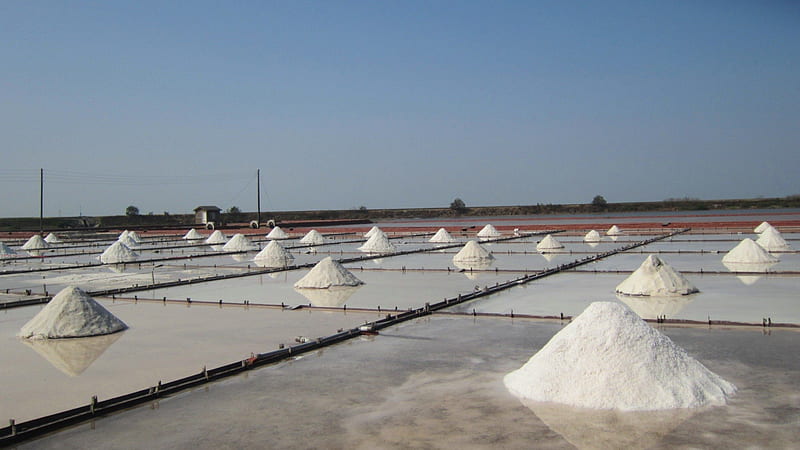Introduction of Sodium Chloride
- Common Name: Table salt
- Chemical Formula: NaCl
- Appearance: White crystalline solid
- Taste: Salty
- Occurrence: Abundantly found in seawater and in mineral form as halite (rock salt)
Physical Properties of Sodium Chloride
- Molecular Weight: 58.44 g/mol
- Density: 2.17 g/cm³
- Melting Point: 801°C (1474°F)
- Boiling Point: 1413°C (2575°F)
- Solubility in Water: Highly soluble
- Crystal Structure: Cubic

Chemical Properties of Sodium Chloride
- Ionic Bond: Composed of sodium ions (Na⁺) and chloride ions (Cl⁻)
- Electrolyte: Conducts electricity when dissolved in water
- Stability: Chemically stable under normal conditions
- Reaction with Acids: Generally unreactive; no reaction with most acids
Natural Occurrence
- Seawater: Major component, makes up about 3.5% of seawater by weight
- Rock Salt Deposits: Found in underground mines
- Evaporation Ponds: Harvested from saltwater evaporation
- Biological Presence: Essential in the body fluids of many animals, including humans
Production Methods
- Mining: Extracted from underground salt mines
- Evaporation: Produced by evaporating seawater or brine from salt lakes
- Solution Mining: Injecting water into underground salt deposits and pumping out the brine, which is then evaporated
Uses in Food
- Flavoring: Enhances taste of food
- Preservation: Inhibits the growth of bacteria, used in curing meats and pickling
- Seasoning: Common condiment at dining tables
- Baking: Helps control yeast fermentation
Industrial Uses
- Chemical Industry: Starting material for the production of chlorine, caustic soda, and other chemicals
- Water Softening: Used in ion exchange processes
- De-icing: Melts ice on roads and sidewalks during winter
- Textile and Dyeing: Used in the dyeing process to enhance dye uptake
- Paper and Pulp: Used in the pulping process
- Oil and Gas: Used in drilling fluids to stabilize wellbores
Biological Importance
- Electrolyte Balance: Maintains fluid balance in cells
- Nerve Function: Essential for the transmission of nerve impulses
- Muscle Function: Helps muscles contract and relax
- Digestive Health: Component of stomach acid (hydrochloric acid) aiding digestion

Health Implications
- Essential Nutrient: Required in small amounts for proper body function
- Daily Intake: Recommended daily intake is about 2,300 mg (one teaspoon) for adults
- Hypertension Risk: Excessive intake can lead to high blood pressure and cardiovascular diseases
- Iodized Salt: Often fortified with iodine to prevent iodine deficiency disorders
Environmental Impact
- Seawater Desalination: Provides fresh water from seawater, leaving behind salt as a by product
- Soil Salinization: Excessive use of salt can lead to soil degradation
- Aquatic Life: High salinity levels can affect freshwater ecosystems
Safety and Handling
- Non-Toxic: Safe for handling in small amounts
- Irritant: Can cause irritation to eyes and skin in concentrated solutions
- Storage: Should be stored in a dry place to prevent caking
Historical Significance
- Ancient Trade: Highly valued commodity in ancient times, used as currency
- Cultural Importance: Symbol of hospitality and preservation in various cultures
- Economic Impact: Salt taxes and monopolies have influenced economies and conflicts throughout history

Fun Facts
- Common Saying: “Worth its salt” refers to the value of salt in ancient times
- Roman Soldiers: Part of their salary was paid in salt, leading to the word “salary” from the Latin “salarium”
- Salt Roads: Trade routes specifically for the transport of salt
Conclusion
Sodium chloride is a versatile and essential compound with a wide range of uses in food, industry, and biology. It plays a crucial role in daily life and has significant historical, cultural, and economic importance. Proper management of salt intake and production is vital for health and environmental sustainability.



